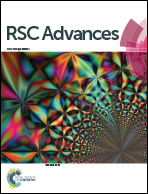A hybrid modeling approach for optimization of PMAA–chitosan–PEG nanoparticles for oral insulin delivery
Abstract
This study aimed to develop pH sensitive polymethacrylic acid–chitosan–polyethylene glycol (PCP) nanoparticles for oral insulin delivery. This was achieved by dispersion polymerization of methacrylic acid (MAA), polyethylene glycol (PEG) and chitosan (CS) in the presence of a cross linking agent, ethylene glycoldimethacrylate (EGDMA), and a polymer initiator, potassium per sulphate. Method development was carried out based on fractional factorial design by varying process parameters such as ratio of MAA to CS, ratio of MAA to EGDMA and the initial amount of insulin used to prepare PCP nanoparticles. PCP nanoparticles were characterized with different techniques including FTIR, DLS, and scanning electron microscopy (SEM). Insulin was incorporated into the nanoparticles by a diffusion filling method. It was found that the PCP nanoparticles exhibited good protein encapsulation efficiency (up to 99.9%). The findings revealed that the nanoparticles were spherical with smooth surfaces. The particle size average was determined to be 172 nm by DLS and 86 nm by SEM. The in vitro release profiles of PCP nanoparticles were investigated both in acidic (simulated gastric fluids, pH: 1.2) and neutral buffered solutions (simulated intestinal fluids, pH: 7.4). In order to have the best performance of nanoparticles, the process parameters were optimized using a support vector regression (SVR) method in combination with genetic algorithms (GA). The results revealed that the optimum settings were as follows: MAA/CS mole ratio (%): 297.35, CS/EGDMA mole ratio (%): 51.4, and the initial insulin amount (mg): 50.3. The findings showed that nanoparticles exhibited a pH responsive release profile where the extent of drug release in simulated intestinal medium was almost two fold more than the simulated gastric media. Global sensitivity analysis was also used to identify the impact of different variables on the PCP nanoparticle characteristics. This study introduces a new approach to rational design of nanoparticles according to the properties of interest.


 Please wait while we load your content...
Please wait while we load your content...